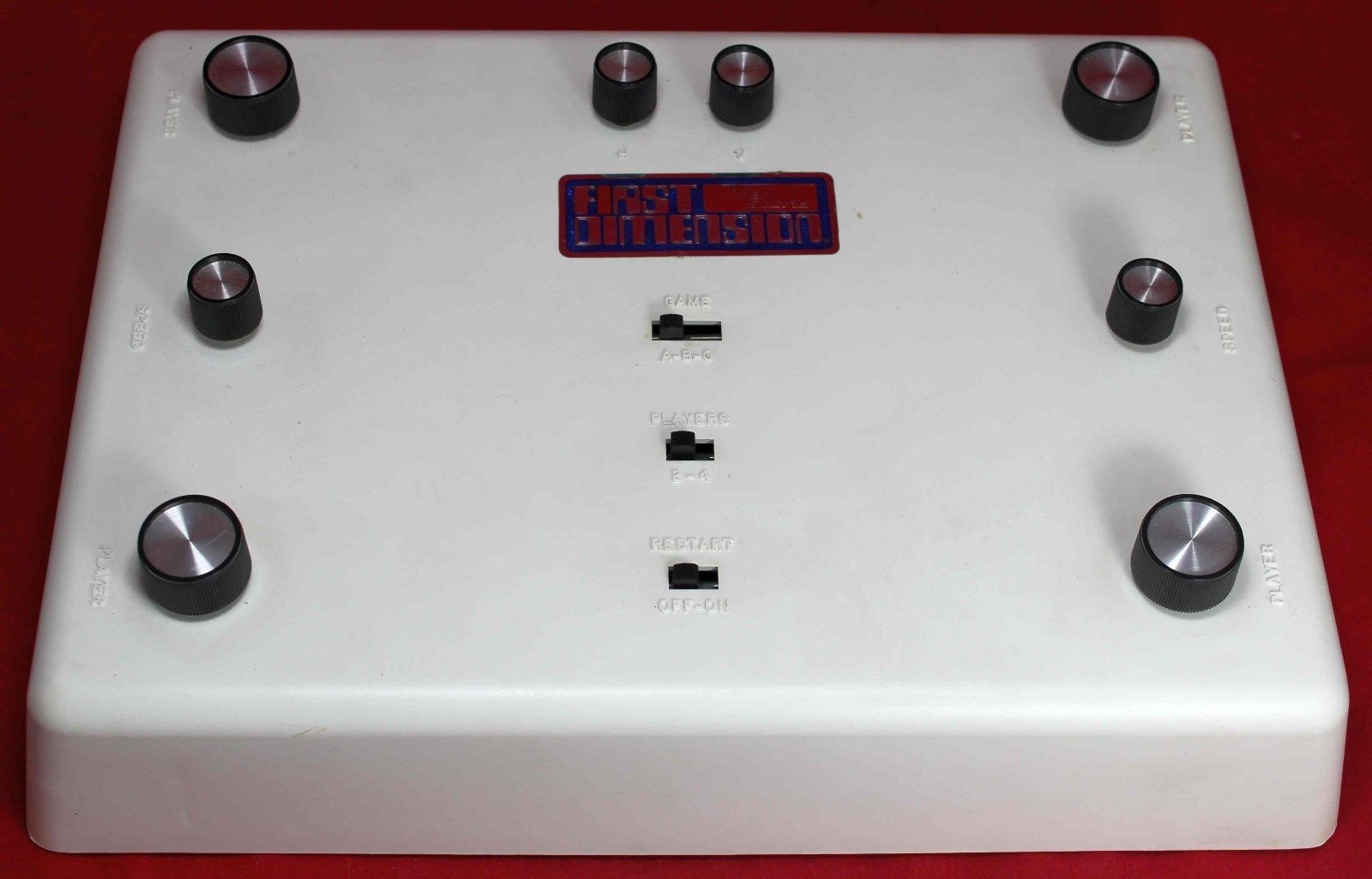-
1975
Hardware Description
First Dimension entered the US video game market in 1975. Their first system was called Video Sports, model FD-3000W, and came out in late 1975. It played quite advanced PONG variations for the era. However, problems appeared while this system was being produced and killed the business little by little. This explains why later modes are not well known. The only other model known to exist is model 76 made in 1976.
Although FD-3000W suffered that bad business, it played very uncommon games and used "analog logic" (CMOS gates in analog mode). Technically talking, it had the big advantage of using a composite output, allowing to plug the game to a computer monitor for a crystal clear picture. An RF switch-box was provided for use with a normal TV set. It modulated the composite video signal, so did not provide the best quality pictures. As a matter of fact, the signal was first modulated by the RF switchbox in order to be used by the TV set, and then demodulated by the TV set, hence a loss in quality. The composite output was a unique feature as of 1975 and allowed playing this game with crystal clear pictures on any computer monitor or TV set equiped with a composite input.
The system was designed in 1975, so it could only use CMOS or TTL logic gates. About 50 CMOS chips were used by the system in addition to the other discrete components (capacitors, etc). The games were also different from most others of the same period: the system played Tennis (2 or 4 players), Hockey (2 or 4 players) and Robot (1 or 2 players against machine).
Tennis was the usual PONG variant. The 4-player mode split the screen horizontally in two parts so that two groups of two players could play at the same time. This was a unique feature.
Hockey did not split the screen when used in 4-player mode, so the game consisted in two teams of one or two players.
Robot is the most uncommon PONG variant. The game is played against the machine by one or two players. The goal is to make the ball go in the hole located on the machines side. To avoid this, the machine moves up and down a larger paddle to bounce the ball back to the players side.
Yet early, this system had on-screen scoring. Because digital on-screen scoring required more expensive components, the cheaper "follow-me" scoring method was used and consisted of two segments shifting from left to right as far as players marked points.
As with the other systems of that era, the game speed was variable. Here again, FD-3000W used a unique feature: each team had its own ball speed. When the ball bounced on a team, the ball speed was set to the team's speed. This required the use of two knobs (one per team). Two other knobs were used to adjust the picture height and width. This feature allowed displaying a 60Hz signal on some 50Hz monitors, since US systems used a 60Hz frame rate.
The system is quite big due to the large circuit board: around 16.7 inches large (40cm). It did not use batteries: only an AC adaptor powered it. As of early 1976, nearly 50,000 units were produced. The total amount of units manufactured is unknown, though the highest serial reported is 33235 (our specimen). Several revisions were made to the circuit board, ranging from A to G or even higher.
Two boxes were made for this game. The initial one was black with color logos. Later in 1976, a cheaper box was made with a black and white xerox-like paper sticked on the carton box.
-
Model Number:
Video Sports FD-3000W -
Manufacturer:
-
Hardware Type:
Video Game -
Manufacture Year:
1975 -
More Info:
-
We recognize our sponsors starting at $1 per entry.
Learn more at https://www.ithistory.org/benefits

